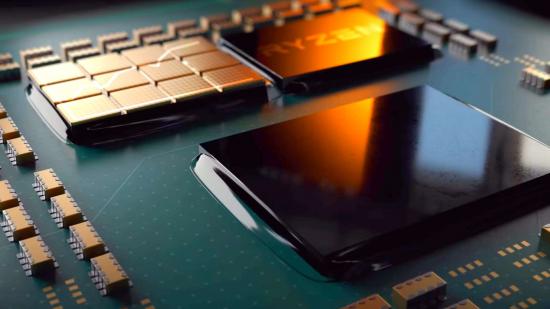AMD looks set to launch its enthusiast-grade Ryzen 9 3950X on September 30, 2019, around the same time new BIOSes will launch to rectify boost frequencies on the entire 7nm CPU lineup.
The 16-core, 32-thread processor was announced back at E3 with a rough launch window sometime this month, and it now appears like AMD will be holding onto its top-tier chip until the last day of the month (just within its touted release window), following its latest bout of BIOSes to tackle boost clock behaviour discrepancies. These discrepancies have been reported since Ryzen 3000 CPUs were first released on July 7, with users reporting their fresh out of the box Zen 2 chips were unable to hit the advertised boost clocks.
This all seemed to stem from the various AGESA and BIOS updates rolled out by AMD and its partners since launch. By AMD’s account, these were holding back boost algorithms from their target frequencies. The company is now hoping to put an end to the confusion with the AGESA 1003ABBA version – Abba joke redacted – which it hopes will not only resolve this artificial boost limit but also implement a slight increase in performance.
AMD has released a statement confirming BIOSes updated with the latest AGESA update are in the hands of its motherboard partners, and will be rolled out to the general public in roughly three weeks time (September 30 from time of writing). These will be capable of increasing boost clocks by some 25-50MHz in some workloads under load, which is expected to apply to all 7nm chips launched so far, and should also keep desktop idle behaviour steady.
The improved desktop idle behaviour is thanks to a new “activity filter”, which will prevent the CPU from freaking out due to background OS and application activity. Overall AMD suspects users will no longer see voltages above 1.2V during low-stress desktop use.
And while it was speculated that AMD had made the change to boost frequencies to increase longevity of its 7nm processors, the company denies these claims. “While AGESA 1003AB contained changes to improve system stability and performance for users, changes were not made for product longevity reasons. We do not expect that the improvements that have been made in boost frequency for AGESA 1003ABBA will have any impact on the lifetime of your Ryzen processor.”
Alongside this BIOS launch, on September 30, AMD will release its AMD Monitoring SDK. This software kit will open up all the tools necessary for third-party apps to access and monitor AMD Ryzen processors accurately, and will open up some 30+ metrics to many popular apps monitoring today. One such metric, Average Core Voltage, is already available in the latest AMD Ryzen Master software.
Here are a few of the new metrics coming with the release, some of which have been available in Ryzen Master:
- Current operating temperature: Reports the average temperature of the CPU cores over a short sample period. By design, this metric filters transient spikes that can skew temperature reporting.
- Peak Core(s) Voltage (PCV): Reports the Voltage Identification (VID) requested by the CPU package of the motherboard voltage regulators. This voltage is set to service the needs of the cores under active load, but isn’t necessarily the final voltage experienced by all of the CPU cores.
- Average Core Voltage (ACV): Reports the average voltages experienced by all processor cores over a short sample period, factoring in active power management, sleep states, VDROOP, and idle time.
- EDC (A), TDC (A), PPT (W): The current and power limits for your motherboard VRMs and processor socket.
- Peak Speed: The maximum frequency of the fastest core during the sample period.
- Effective Frequency: The frequency of the processor cores after factoring in time spent in sleep states (e.g. cc6 core sleep or pc6 package sleep). Example: One processor core is running at 4GHz while awake, but in cc6 core sleep for 50% of the sample period. The effective frequency of this core would be 2GHz. This value can give you a feel for how often the cores are using aggressive power management capabilities that aren’t immediately obvious (e.g. clock or voltage changes).
- Various voltages and clocks, including: SoC voltage, DRAM voltage, fabric clock, memory clock, etc.
So AMD’s not only hoping to solve its BIOS woes, but also improve users experience monitoring and assessing their processor performance. All of which appears to be necessary precursors to the launch of its fastest Ryzen 3000 processor to date: the Ryzen 9 3950X.
But it’s not only speculation that would have this top chip launching on the last day of the September. WCCFTech spotted the Ryzen 9 3950X over at Digitec, a German retailer, with that very same release date, albeit with what looks to be a placeholder price of €999. The chip was first announced over at E3 2019 with a $749 price tag.
